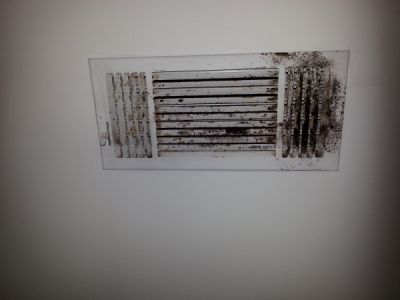
For those of us who live in the deep south, high humidity is as much a part of our summers as is watermelon, Braves baseball, and sunburns. Suffering from the effects of high Relative Humidity (RH) inside our home is definitely not popular, nor comfortable.
What Causes Mold & Rust In Your Air Conditioner?
A healthy AC system is capable of producing temps in the mid-to-high 40’s degree range, (I’ve measured them myself, often). When you blow that cold air through a duct system that contains metal, that metal is chilled to the temps of the airflow.
When the duct system is in a vented attic, the metal boots must be properly, thoroughly sealed and insulated, or else the high RH in the attic will condense on the sheet-metal and run downhill… thus dripping from ceiling vents and creating the perfect location for rust or mold to call home.
How To Remove Mold On AC Vents
The remedy is obvious: You’ve got to get into your attic, dig through the insulation, and thoroughly seal and insulate the sheet-metal in your duct system. This is not fun. But it has to be done, or else make the investment to have professionals (like Bird) handle it.
- Grab your ladder and a cordless drill.
- Remove those stamped-metal vent covers.
- See that big gap where the sheet-metal boot doesn’t seal against the sheetrock ceiling? Use clear silicone caulk, and seal those gaps.
- Wash the vent covers, and replace.
Good luck, and if you have further questions about dealing with rust and black mold on air conditioning vents, please send me an email. I am happy to discuss solutions with you!
Contact Bob Bird at Bob@BirdInsulation.com or schedule an appointment online for all your insulation and duct sealing needs.





